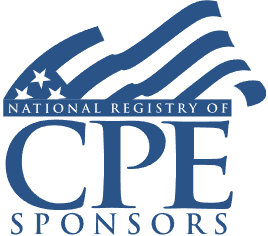Partnership Exchanges: Section 1031, Drop and Swaps, Swap and Drops, Mixing Bowl, and Other Strategies

Course Details
- smart_display Format
On-Demand
- signal_cellular_alt Difficulty Level
Intermediate
- work Practice Area
Tax Preparer
- event Date
Wednesday, August 9, 2023
- schedule Time
1:00 p.m. ET./10:00 a.m. PT
- timer Program Length
110 minutes
-
BARBRI is a NASBA CPE sponsor and this 110-minute webinar is accredited for 2.0 CPE credits.
-
BARBRI is an IRS-approved continuing education provider offering certified courses for Enrolled Agents (EA) and Tax Return Preparers (RTRP).
This course will explain methods available to swap assets held in partnerships, including methods that combine eligibility for Section 1031 treatment. Our panel of partnership tax experts will explain drop and swap, swap and drop, and mixing bowl strategies available to partners that allow for an exchange of assets while deferring tax on any inherent gain.
Faculty

Ms. Flavin is a member of the New York and Connecticut Bars, and has been practicing real estate law since 1992. She has been specializing in 1031 exchanges with IPX since 1999. In her position as Northeast Regional Manager of Investment Property Exchange Services, Ms. Flavin frequently lectures and writes articles on IRC § 1031 tax deferred exchanges. She teaches Continuing Legal Education and Continuing Professional Education to Attorneys and CPA’s. Ms. Flavin is an adjunct professor at the University of New Haven where she teaches Business Law. She received her B.A. from St. John’s University and her J.D. from St. John’s School of Law in 1992.

Professor Borden’s research, scholarship, and teaching focus on taxation of real property transactions and flow-through entities (including tax partnerships, REITs, and REMICs). He teaches Federal Income Taxation, Partnership Taxation, Taxation of Real Estate Transactions, and Unincorporated Business Organizations, and he is affiliated with the Dennis J. Block Center for the Study of International Business Law. His work on flow-through and transactional tax theory appears in articles published in law reviews including Baylor Law Review, University of Cincinnati Law Review, Florida Law Review, Georgia Law Review, Houston Law Review, Iowa Law Review, Tax Lawyer, and Virginia Tax Review, among others. His articles also frequently appear in leading national tax journals including Journal of Taxation, Journal of Taxation of Investments, Real Estate Taxation, and Tax Notes.
Description
Section 1031 specifically excludes partnership interests as eligible property for like-kind exchanges. Drop and swaps allow partners to receive individual ownership interests separately so that each partner can do a 1031 exchange or exit a partnership or LLC as they prefer. The investment is dropped into a tenancy in common (TIC) and subsequently swapped. The conversion must comply with complex regulations for the transaction to be respected. The timing of the drop and the swap is critical.
A mixing bowl structure enables partners to trade assets by contributing the assets to a newly created partnership and to defer the tax on the exchange. However, the partners must execute the transaction correctly to avoid the disguised sale and anti-mixing bowl sanctions. Tax advisers working with partnerships and LLCs need to understand how these transactions are structured so that taxpayers can defer taxes on their investments.
Listen as our authoritative panel explains strategies to exchange assets, preserve the benefits of Section 1031, and avoid anti-mixing bowl rules and other sanctions.
Outline
- Partnership exchanges: an overview
- Drop and swaps
- Swap and drops
- Mixing bowl strategies
- S corporation drop and swaps
- Other exchange techniques
- Avoiding sanctions
Benefits
The panel will review these and other critical issues:
- Key timing considerations for drop and swap exchanges
- Satisfying use and holding requirements for drop and swaps
- Avoiding recognition of pre-contribution gain in mixing bowl transactions
- Tax considerations for S corporation drop and swaps
NASBA Details
Learning Objectives
After completing this course, you will be able to:
- Identify steps to avoid anti-mixing bowl rules
- Determine appropriate timing of drop and swap to ensure Section 1031 benefits
- Decide partners who are ideal candidates for drop and swaps
- Ascertain how to meet use and holding requirements for like-kind exchanges
- Field of Study: Taxes
- Level of Knowledge: Intermediate
- Advance Preparation: None
- Teaching Method: Seminar/Lecture
- Delivery Method: Group-Internet (via computer)
- Attendance Monitoring Method: Attendance is monitored electronically via a participant's PIN and through a series of attendance verification prompts displayed throughout the program
- Prerequisite: Three years+ business or public firm experience preparing complex tax forms and schedules, supervising other preparers or accountants. Specific knowledge and understanding of pass-through taxation, including taxation of partnerships, S corporations and their respective partners and shareholders.

Strafford Publications, Inc. is registered with the National Association of State Boards of Accountancy (NASBA) as a sponsor of continuing professional education on the National Registry of CPE Sponsors. State boards of Accountancy have final authority on the acceptance of individual courses for CPE Credits. Complaints regarding registered sponsons may be submitted to NASBA through its website: www.nasbaregistry.org.

Strafford is an IRS-approved continuing education provider offering certified courses for Enrolled Agents (EA) and Tax Return Preparers (RTRP).
Related Courses

Medicaid Asset Protection Trusts: Technical Overview and Tax Considerations
Available On-Demand

Family Partnerships: Navigating the Discounting Rules for Family-Controlled Entities
Thursday, March 6, 2025
1:00 p.m. ET./10:00 a.m. PT

Form 1041 Schedule D: Reporting Capital Gains for Trusts and Estates
Available On-Demand
Recommended Resources
How CPE Can Bridge the Gap Between What You Know and What You Need to Know
- Career Advancement